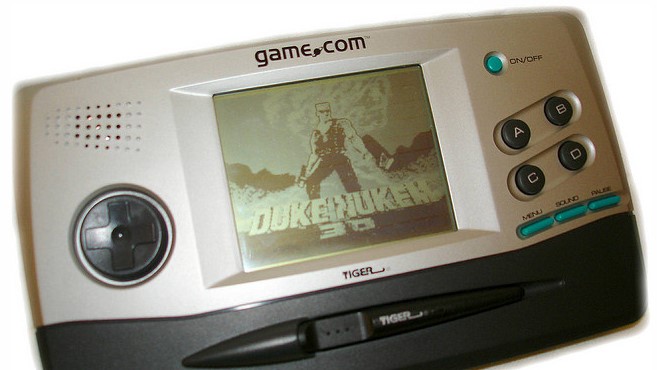Video games have come a long way since their inception and a lot has changed in the gaming world even as at the time the Game.com console was released. In 1997, Tiger Electronics released the Game.com console, which is relatively unfamiliar with most people. The Game.com console was one of the earliest video game consoles to have internet connectivity, a touch screen interface, and cartridge-based games. It was an all-in-one entertainment system that played video games, enabled internet browsing, and contained personal organizer features.
Although the console never enjoyed the success of its contemporaries such as Sega Game Gear and Nintendo Game Boy, it nonetheless, played a significant role in the history of video gaming, and thus, it’s worth taking a deeper look into its story. In this article, we take a retrospective look at the Game.com console, including its overview, history, reception, sales, games, and review. Through this, we hope to help you understand why the Game.com console was an important milestone in the history of video gaming.
Overview
The Game.com console was released in 1997 by Tiger Electronics, a subsidiary of Hasbro, Inc. The console was unique because it was one of the first handheld console devices to offer a touchscreen, a feature previously only found in arcade machines.
The Game.com was designed to compete with other handheld consoles such as Nintendo’s Game Boy and Sega’s Game Gear. The console had a sleek design and was available in two color variants; silver and black.
In terms of technical specifications, the Game.com featured a 16MHz processor, 128K of RAM, and a monochrome LCD screen that offered a resolution of 200×160 pixels. The touchscreen added an extra layer of interactivity for gamers, but some found it difficult to use due to its poor touchscreen implementation.
Compared to other consoles of the time, the Game.com fell short in terms of processing power, battery life, and game library. However, the ability to connect the console to the internet via a built-in modem made it stand out from the crowd.
Reception
The Game.com console was marketed as a portable gaming device, which presented an exciting new proposition in the late 90s. Reviewers, critics, and gamers alike were curious about the features and performance of the console. The console’s reception was mixed, with some critics applauding its innovative features, while others were less enthusiastic.
Many critics praised the console’s touch screen and stylus functionality, as well as its built-in PDA that allowed for additional functionality. Some even believed that the console could have revolutionized the gaming industry with its unique features. However, other critics felt that the console was merely mediocre, and its limited selection of games diminished its appeal.
Users of the console also voiced their opinions, with some praising its portability and innovative features. However, others were critical of its battery life, lack of games, and low-quality graphics. Additionally, some users found the stylus to be inaccurate, making the touch screen functionality less appealing.
The Game.com console did provide some innovative features that were ahead of its time, and it received praise for those qualities. However, its lack of games and underwhelming graphics made it less desirable for many gamers. When compared to other consoles available at the time, like the Game Boy Color or the Sega Game Gear, the Game.com struggled to compete.
Sales
Game.com was released in 1997, in a gaming industry that was still in its infancy. Despite this, the console managed to sell relatively well, with sales figures reaching around 300,000 units in its first year. However, compared to rivals such as Nintendo’s Game Boy and Sony’s PlayStation, the console’s sales were a mere blip on the industry’s radar.
The Game Boy, in particular, was a tough competitor for Game.com, as it had already been in the market for almost a decade, had a massive game library, and the cost of development and publishing a game on the platform was significantly lower than Game.com.
However, the sales and popularity of Game.com impacted the gaming industry greatly. It paved the way for future handheld gaming consoles and raised the bar for the expectations of what a portable console should include. Furthermore, it demonstrated that there was a growing interest in portable gaming consoles, which had not been apparent until then.
launched in 1997, and it came with five built-in games: Lights Out, Sonic Jam, Mortal Kombat Trilogy, Tiger Casino, and Indy 500. Alongside these games were other classic games like Wheel of Fortune and Jeopardy! The games were designed with a monochromatic and low-resolution LCD screen, which resulted in pixelated graphics. The design limitations made the console an unimpressive one compared to contemporaries like the Nintendo Game Boy and SEGA Game Gear.
Despite the lower quality graphics, several games released on the had unique features, which made them stand out. For example, Lights Out proposed a captivating puzzle like never before, and Sonic Jam offered a different gameplay perspective compared to the original Sonic game. Other popular games on the included Duke Nukem 3D, Fighters Megamix, and Resident Evil 2. In retrospect, the console only had a handful of games, but many of them were memorable and highly ranked amongst similar games available on other consoles of the time.
Most games made for other consoles and platforms that were also available on the had a significant difference, and the arcade-style games on this console were usually in black and white due to the screen designs limits. However, games like Sonic Jam looked excellent on the console’s unique screen. Although it could not offer the same gaming experience as its contemporary consoles, the had a modest games library that could satisfy most gamers at the time.
As we continue with the article, we will discuss the history and sales of the console.
Conclusion
The console had a unique library of games that included some memorable titles, such as Sonic Jam and Mortal Kombat Trilogy. However, the console’s library could not compete with other consoles of the time such as Nintendo’s Game Boy and Sega’s Game Gear.
Despite its shortcomings, the Game.com console represented a significant milestone in the gaming industry, and its technical advancements served as a model for future gaming consoles. Overall, the console had its pros and cons, and its legacy deserves to be remembered and celebrated.
If you’re interested in retro gaming or the history of gaming consoles, we highly recommend giving the Game.com console a chance. It remains a unique and fascinating piece of technology that showcases the incredible advancements made in the gaming industry over the past few decades.
FAQ
1. What was the price of the Game.com console when it was released?
The Game.com console was released with a price tag of $69.99.
2. What was the most popular game for the Game.com console?
The most popular game for the Game.com console was Sonic Jam.
3. How many Game.com consoles were sold?
It is estimated that around 250,000 Game.com consoles were sold worldwide.
4. How does the Game.com console compare to other consoles of the time?
The Game.com console had a smaller game library and less advanced technical specifications compared to other consoles of the time, such as the Nintendo Game Boy and the Sega Game Gear.
5. Why did the Game.com console fail?
The Game.com console faced stiff competition from other consoles and suffered from a lack of developer support and limited game library, ultimately leading to poor sales.












